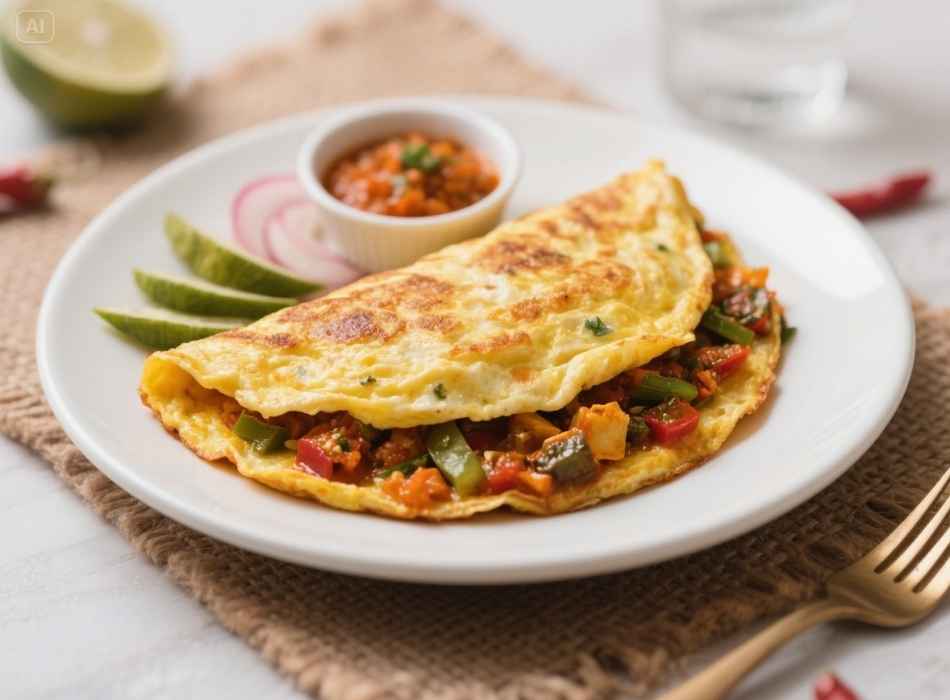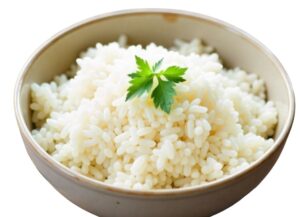Breakfast lovers, rejoice! The omelette, a simple yet versatile dish, has graced tables across the world in countless forms. Whether you’re looking for hearty comfort food or a light start to the day, there’s an omelette for every taste and occasion.
This blog will introduce you to nine delicious types of omelettes from various cuisines. Plus, you’ll learn what makes each unique so you can try them at home. By the end, you’ll not only know your French from your Western omelette but possibly feel inspired to create your spin.
What Is an Omelette?
Before we jump into the different types, let’s define what an omelette is. Simply put, an omelette is a dish made from beaten eggs that are cooked until just set, then often folded around fillings like cheese, vegetables, or meat. While the concept sounds simple, the details of technique, ingredients, and presentation can vary dramatically from one type to another.

1. The Classic French Omelette
The French omelette (or “omelette roulée”) is the gold standard. Made with simple ingredients such as eggs, butter, salt, and pepper, it’s more about technique than any specific filling. The eggs are whisked until smooth, then simmered over low heat while being stirred constantly to create a silky, custard-like texture. French omelettes are typically folded into a neat cylinder or half-moon shape and can include herbs like parsley, chives, or tarragon for extra flair.
Why Try It?
Its refined technique delivers a smoother texture than most other omelettes. Once you’ve mastered the method, it’s also surprisingly fast to whip up.
2. Western Omelette (or Denver Omelette)
The Western omelette is hearty and packed with bold flavours. Traditionally, it features diced ham, bell peppers, and onions, but modern interpretations may include mushrooms, cheese, and even bacon. The eggs are often whisked and cooked with the fillings mixed in before folding.
Why Try It?
Perfect for those who love a filling breakfast, the Western omelette doubles as a satisfying brunch staple.

3. Spanish Omelette (Tortilla Española)
This isn’t your typical omelette. The Spanish omelette is dense and hearty, made with layers of thinly sliced potatoes and onions slowly cooked in olive oil. Once the eggs are added, the mixture is cooked until it’s firm enough to flip (some keep it golden brown on one side only).
Why Try It?
This dish is excellent for feeding a crowd. It’s as enjoyable served warm as it is cold, making it a perfect addition to potlucks or picnics.
4. Japanese Tamagoyaki
Tamagoyaki is closer to a rolled omelette and has a slightly sweet, savoury taste. It’s made by cooking thin layers of egg; each carefully rolled into the next using a square or rectangular pan. The dish gets its flavour from soy sauce, sugar, and mirin.
Why Try It?
Tamagoyaki is delicious and visually stunning. Serve it with sushi or rice for an authentic Japanese experience.

5. Indian Masala Omelette
The Indian masala omelette is a flavour-packed breakfast option. Eggs are whisked with finely chopped tomatoes, onions, green chillies, coriander (cilantro), and a blend of spices like turmeric, cumin, and red chilli powder. It is then cooked until golden, giving it a unique punch of flavour.
Why Try It?
If you love spice, the masala omelette will awaken your taste buds. Pair it with roti or buttered toast for a complete meal.
6. Thai Omelette (Khai Jiao)
The Thai omelette is fluffy, crispy, and indulgent. Whisked eggs are seasoned with fish sauce or soy sauce and fried in hot oil, puffing up to create a crunchy yet airy texture. It’s often served over steamed jasmine rice and can be paired with chilli sauce for an extra kick.
Why Try It?
This omelette is fantastic if you love bold umami flavours. It’s also lightning-fast to prepare.
7. Italian Frittata
While technically not folded like a traditional omelette, the Italian Frittata deserves a spot. It’s made by cooking a mixture of eggs, vegetables, and sometimes meats slowly over low heat, often finishing in the oven. Frittatas are thick and sliceable, perfect for sharing.
Why Try It?
Great for meal prep or feeding a crowd, the Frittata is endlessly customizable with whatever you have on hand.

8. Persian Kuku Sabzi
Herb lovers, meet your dream omelette. The kuku sabzi is an Iranian dish rich in fresh herbs like dill, parsley, cilantro, and chives. It is mixed with eggs and baked or pan-fried. The result is a vibrant green omelette bursting with fresh, earthy flavours.
Why Try It?
This option is light, nutritious, and a great way to incorporate more greens into your diet.
9. Korean Gyeran Mari
Gyeran Mari, like Tamagoyaki, is rolled, but the Korean version often includes ingredients like scallions, carrots, or ground meat. It’s lightly seasoned with salt and sometimes sesame oil, making it a flavorful and textural delight.
Why Try It?
Loved for its cute, bite-sized shape, this omelette makes a fun addition to lunchboxes or party platters.
Tips for Making the Perfect Omelette at Home
Now that all these omelette styles inspire you, here are some quick tips to help you master them:
- Use Fresh Eggs: Fresher eggs have better texture and flavour.
- Preheat Your Pan: Always use a non-stick skillet and ensure it’s preheated for even cooking.
- Don’t Overcook: Remove the omelette when it’s slightly runny in the centre. Residual heat will continue to cook it perfectly.
- Experiment with Fillings: While tradition is excellent, sometimes the best omelettes come from a bit of personalization.
Explore the World Through Omelettes
There you have it! Nine unique omelettes from around the world, each offering its twist on this breakfast (or any time of day) classic. Whether you’re in the mood for creamy French simplicity or the crispy crunch of a Thai omelette, there’s no shortage of delicious options to try.
Now, head to your kitchen or favourite local eatery and get cracking!










